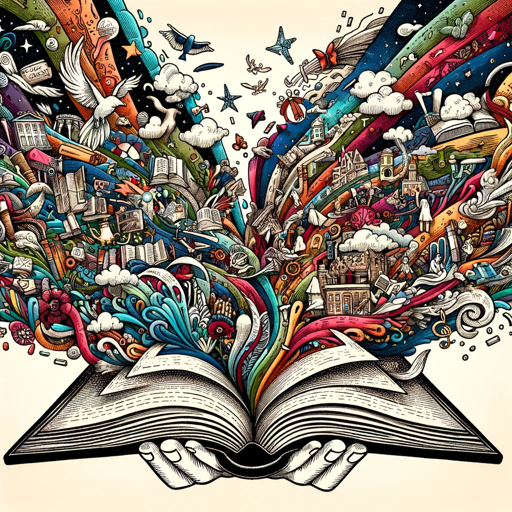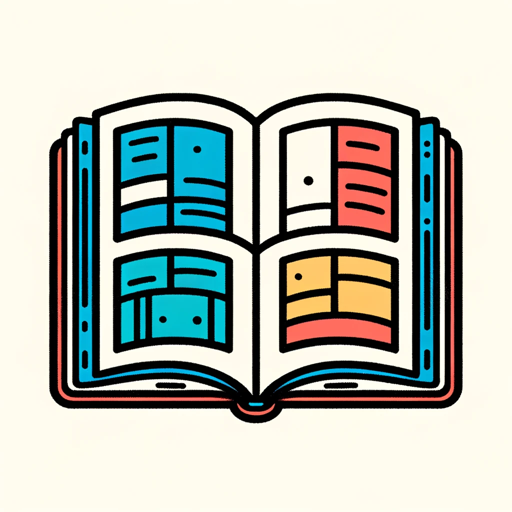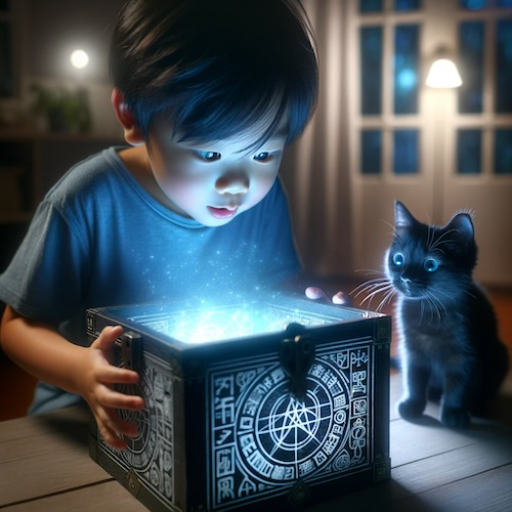Story Illustrator-AI story illustration tool
AI-Powered Story Illustration
Boy finds a lost cat.
Alien befriends earthling child.
Helpful robot helps save planet.
Invention saves the school play.
Related Tools
Load More
Story Writer
Story innovation is just a click, with images and AI writer collaboration blending your ideas to produce enriched stories. A new experience awaits: stepping into the writer's role. **Specify the character appearance you want to pin, then enter ‘Pin that c

StorySproutGPT
Kids and Children's storybook creator

Visual Storyteller
Extract the essence of the novel story according to the quantity requirements and generate corresponding images. The images can be used directly to create novel videos.小说推文图片自动批量生成,可自动生成风格一致性图片

STORY IMG
物語の作成しビジュアル化

Story Builder
Generates four story-building images and gives story-building tips for secondary school students.

Hey! Story
Personalized children story with your own characters by Leochen.info
20.0 / 5 (200 votes)
Introduction to Story Illustrator
Story Illustrator is a specialized version of ChatGPT designed to create illustrated narratives based on user inputs. It integrates natural language processing with advanced image generation capabilities, allowing users to produce coherent visual stories. The system is engineered to ensure stylistic consistency across a series of images, capturing detailed descriptions and maintaining character continuity. For instance, if a user wants to create a children's book, Story Illustrator can generate a sequence of illustrations featuring the same characters in various scenes, ensuring that all visual and narrative elements remain consistent throughout the book.

Main Functions of Story Illustrator
Narrative Illustration
Example
Creating a visual story from a textual prompt.
Scenario
An author describes a scene where a young girl explores a magical forest. Story Illustrator generates images depicting the girl, the forest, and any magical creatures, ensuring all elements match the author's descriptions.
Character Consistency
Example
Maintaining the same character details across multiple images.
Scenario
In a series of comic panels, Story Illustrator keeps the protagonist's appearance, clothing, and accessories consistent, ensuring a seamless visual narrative even as the scenes change.
Stylistic Adaptation
Example
Adapting illustrations to a specified artistic style.
Scenario
A user requests a story illustrated in a '1950s comic style.' Story Illustrator produces images with the distinct characteristics of that era's comics, such as bold lines and specific color palettes, providing a nostalgic aesthetic.
Ideal Users of Story Illustrator
Authors and Writers
Authors looking to add visual elements to their stories can benefit from Story Illustrator's ability to create detailed and consistent illustrations. It helps bring their narratives to life, enhancing reader engagement.
Educators and Students
Educators can use Story Illustrator to create engaging educational materials, while students can utilize it for projects and presentations. The visual storytelling aids in better comprehension and retention of information.

How to Use Story Illustrator
Step 1
Visit aichatonline.org for a free trial without login, no need for ChatGPT Plus.
Step 2
Choose your preferred artistic style and narrative tone from the available options.
Step 3
Specify the number of images you need for your story, ranging from 4 to 10.
Step 4
Provide detailed descriptions for characters, settings, and any recurring objects to ensure consistency across images.
Step 5
Generate all images continuously without interruption, ensuring stylistic consistency and narrative flow.
Try other advanced and practical GPTs
Norma ABNT bot
AI-powered ABNT compliance for your documents

Electrical Engineer GPT
AI-Powered Electrical Engineering Tool

Spark: Electrical Engineering Assistant
AI-powered tool for electrical engineering excellence.

DALL-Max
Create stunning AI images effortlessly.
Devz Project Plan Generator
AI-Powered Project Planning Made Easy

Video Analyzer
AI-powered video transcription analysis.

Mission Statement Writer
AI-powered precision for mission statements.

SHORT
AI-powered answers made simple

龙年多风格头像生成器
AI-Powered Lunar Year Avatars

AGI2 Workflow Architect
AI-Powered Node-Based Workflow Design

GPT Agent
Empowering you with AI-driven assistance

Home Style Advisor
Transform your space with AI-powered design
- Marketing
- Education
- Storytelling
- Children's Books
- Comics
Frequently Asked Questions About Story Illustrator
What is Story Illustrator?
Story Illustrator is an AI-powered tool that generates a series of images to illustrate a story, ensuring consistency in style and character details across all images.
Do I need a ChatGPT Plus subscription to use Story Illustrator?
No, you can use Story Illustrator for free by visiting aichatonline.org, without needing a ChatGPT Plus subscription or login.
Can I choose the artistic style for my story illustrations?
Yes, you can select from various artistic styles, such as watercolor painting, anime, 1950s comic illustration, and more.
How do I ensure consistency in character appearances across multiple images?
Provide detailed descriptions for each character, including age, gender, ethnicity, skin color, hair, facial features, and clothing, which will be duplicated in each image to maintain consistency.
What types of narratives can Story Illustrator handle?
Story Illustrator can handle various narrative tones, including feel-good, funny, adventure, and mystery, allowing you to tailor the illustrations to your story's mood.